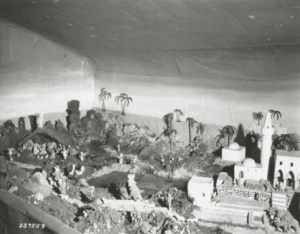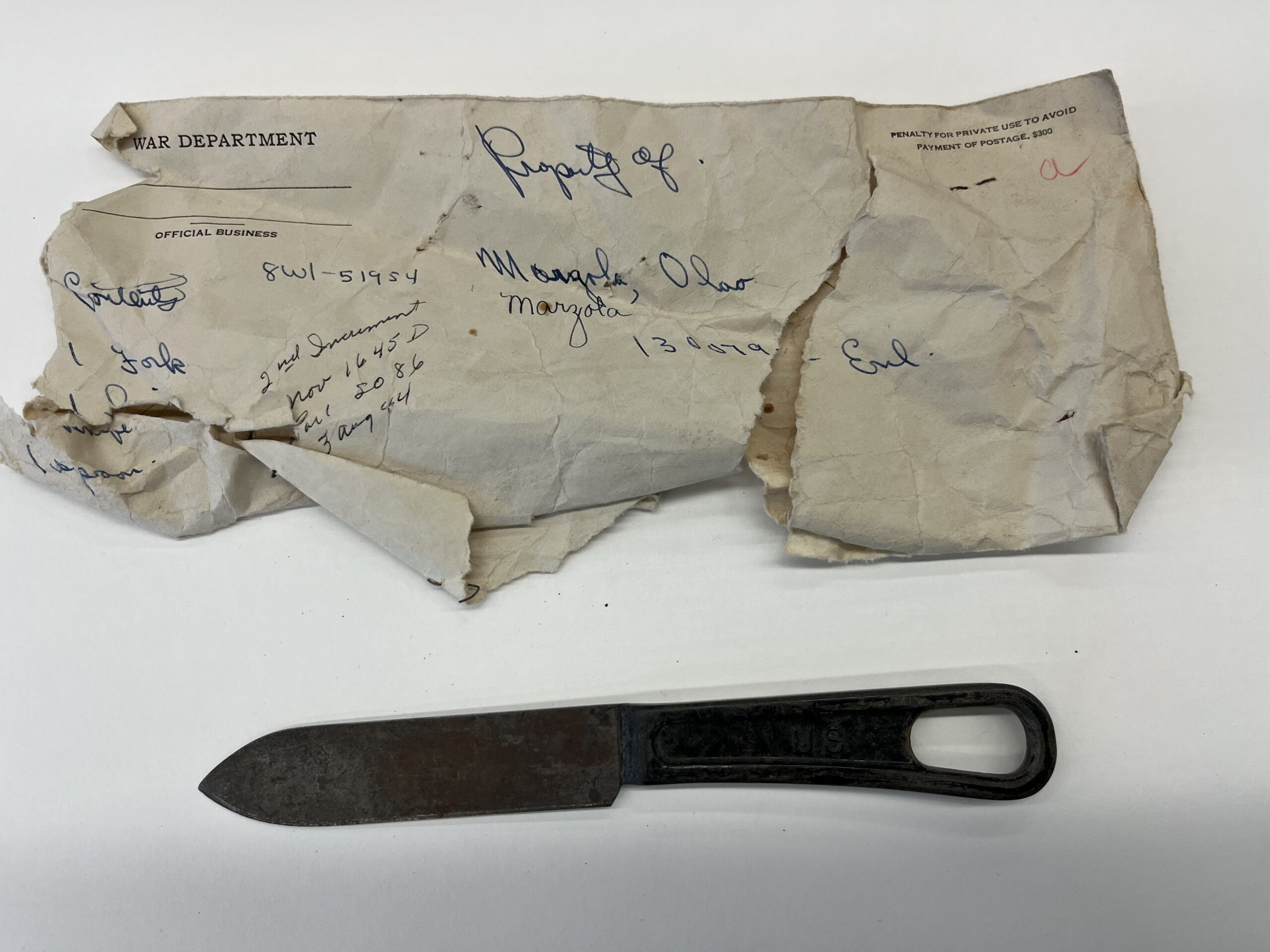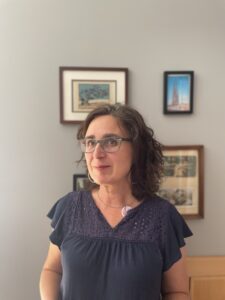
The Calandra Institute’s current exhibition Creativity and World War II Italian POWs in the United States, curated by Laura E. Ruberto and Joseph Sciorra, can now be explored via a digital 3D model. View it here. To learn more about the exhibition click here, view the catalog, or read a brief description:
The exhibition presents creative work made by Italian soldiers who were imprisoned by the Allied forces during World War II, focusing on those held in the United States. These objects, often made from salvaged materials, ranged in size from a small inlaid ring to a large Catholic chapel with a 65-foot bell tower. There is no archive or collective depository about World War II Italian prisoners of war in Allied hands. To document this creative work, the exhibit pulls from research completed by co-curator Laura E. Ruberto (Berkeley City College), including historical photographs, rare remaining artifacts, oral testimonies, written accounts, family memories, and private collections. The exhibition, designed by Polly Franchini, brings together a selection of these objects, images, and stories to present this little-known history. Highlighting the artistry of incarcerated Italian servicemen (some of whom maintained allegiance to Fascism) is not meant to trivialize the atrocities of war or to minimize the resistance of those who fought at great sacrifice. Rather, it offers an opportunity to reflect on the myriad ways that identity and imagination are shaped materially during the adverse conditions of war.
The public can also view the gallery in person at the Calandra Institute’s Midtown Manhattan location. It will be on view from 9am to 5pm, Monday to Friday, until November 26.


 Laura E. Ruberto, Berkeley City College
Laura E. Ruberto, Berkeley City College